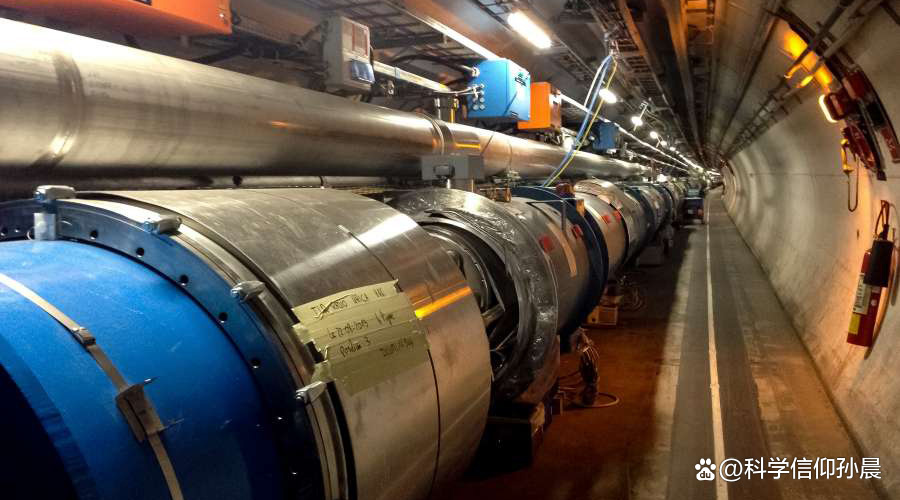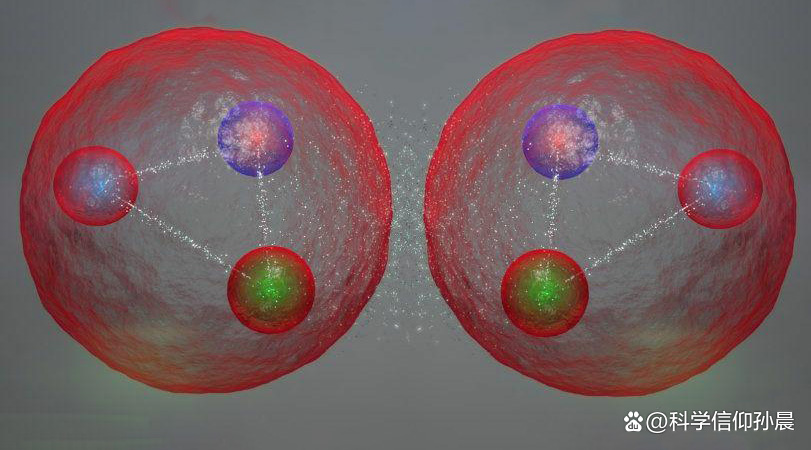Fermiko and Bigga are the smallest unit of material. What is the difference between them?Different roles
Author:Scientific belief Time:2022.09.03
"One foot, take half of the day, and endlessly," meaning a long wooden stick, cut half a day, and it will never be intercepted.
This is a kind of thinking about the unknown world more than 2,000 years ago. Not only did the ancient Chinese sages have such thinking, but ancient philosophers in other parts of the world also thought similarly, but the material can really be infinitely subdivided infinite Go down? No, if in the real world, material can really be infinitely subdivided, then the world will appear too absurd, so ancient Greek philosophers are more willing to believe that material is the smallest unit. For example, the ancient Greek natural philosopher Demolutolt believed that material existence was originally the origin. The origin was the atomic nucleus void. Of course, it is impossible to know what atoms are in the era of Democylite, so the atoms it calls is just the same name as the atoms we call.

The atoms of Democleut are similar to what we are now called basic particles, representing the smallest unit of material.
Later, with the birth of science and the advent of various precision scientific instruments, the thoughts of ancient scholars have gradually been confirmed, and people have found that material is the smallest unit. Ancient scholars once thought that water was the origin of all substances, and modern people gradually found that the water in the macro world was actually composed of countless tiny molecules. These tiny molecules were water molecules. It is composed of the corresponding material molecules. We can continue to divide a material into small portions with sharp knives, but we cannot destroy any of the molecules in it. Our so -called division is just to separate these molecules together.

We cannot use a knife to destroy the molecule. It does not mean that the molecule is the smallest unit of the material. In fact, the molecules are composed of smaller atoms. For example, water molecules are composed of two hydrogen atoms and an oxygen atom.
Within a period of time, humans thought that atoms were the smallest unit of material. Later, British physicist Lutherford also discovered that the atoms were actually composed of atomic nucleus and nuclear electrons. So can the nucleus be subdivided? Yes, it is ok, Lusheford and his students use high -speed particles to impact the atomic core, and found that there are protons and neutrons in the nucleus. Can protons and neutrons continue to be subdivided? Just hit it. Proton and neutrons were not destroyed after being impacted by high -speed particles, but there were three different angles of bias, which means that there are things inside the proton and neutron.

Now we know that the larger structure of the proton and neutron is Quark. Generally speaking, they are all formed by the combination of three quarks, and the quark is the smallest unit of the known material. We call it "basic particles "".
Since quark is the smallest unit of material, why can't we break the proton and neutron? Don't say us anymore, even the powerful neutron star in the universe can't do it. The neutron star is the product of the "death" of large -quality stars. It is a very dense celestial body. Under its huge gravity, the material will be torn into a neutron, but that's it. Three quarks combined with neutron structures. Why is this?

There are four known basic forces in the universe, namely gravity, electromagnetic power, strength, and weakness, and the force that combines Quark is strong.
Power is more interesting. The gravity and electromagnetic forces we are familiar with will weaken with the increase of distance. For example, the farther away from the earth, the smaller the gravity; the farther the two magnets are from It will increase with the increase of distance, that is, if we try to open the two Quickla, then the combination of them will increase rapidly. The farther it is pulled, the greater the strength. , Can't break. Quick is the basic particle, but it is not the only basic particle. In addition to the quark, the basic particles also include photons, electronics, glue, neutrinos, and so on.

In order to better understand the basic particles, modern physics has a standard model and divides the basic particles into two categories, namely Fermiko and Bosse.
The quarks, electronics, and neutrinos that were just mentioned were Fermiko, while photon, glue, and Higgs boson belonged to the boson. So what is the difference between Fermiko and Bosse? In general, the role played by the two is different. Fermiko is the smallest unit that constitutes the material, such as Quark, and the three quarks are combined into a neutron. Biggains are equivalent to a medium. We just said it just now, so that the combination of three quarks is strong, and the strength needs to be passed on. Essence If Fermiko is metaphorized to bricks, the boson is a cement that pile bricks into walls, but both Fermiko or Bolor, they are the smallest units that are no longer divided.
- END -
The list of national breeding enterprises will be announced in Hefei
The reporter learned from the Municipal Agricultural and Rural Bureau that the six types of industrial enterprises in our city have been selected as breaking problems, supplementing shortcomings, and
Is the child's IQ really inherited by parents?the answer is……

As the saying goes, Dragon Shenglong, Fengsheng Feng, and mouse son will be holes....